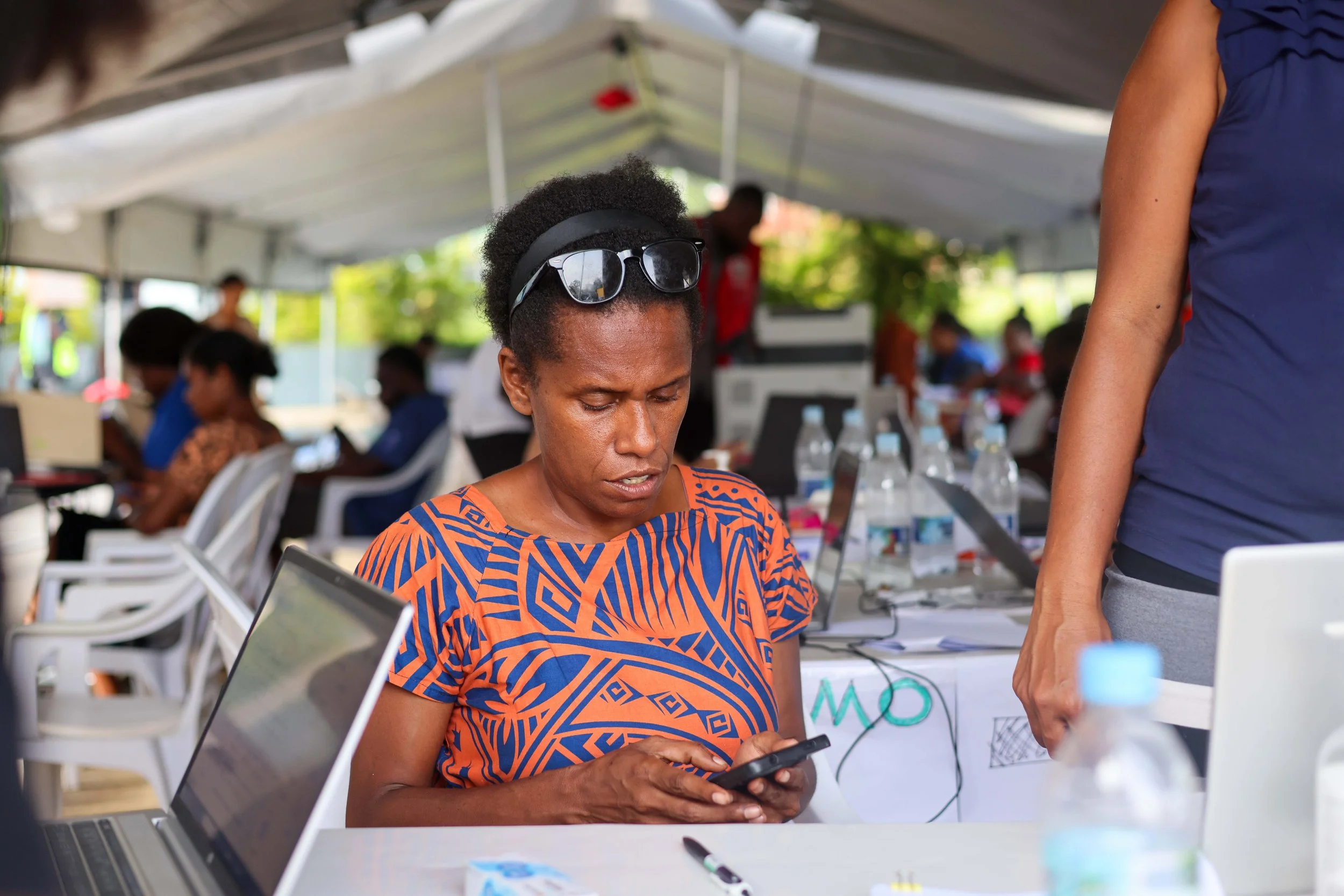World Humanitarian Day 2025: empowered local communities
On World Humanitarian Day, we celebrate humanitarian workers like Frida, dedicated to building long-lasting and locally-owned solutions to humanitarian preparedness and response. IMAGE: Jaimeen Kenni/ World Vision in Vanuatu
By Lindah Peter, Resilience and Response Manager, CARE in Vanuatu
On World Humanitarian Day, we celebrate humanitarian workers in Vanuatu and pay tribute to those who lost their lives during the 7.3 magnitude earthquake that struck Port Vila, Efate, on 17 December 2024. It is a day to honour the dedication, courage, and compassion of people working to help others in times of crisis.
The Australian government champions localisation in disaster preparedness, supporting initiatives that emphasise the value of locally led humanitarian responses within the Pacific. This commitment is evident through Disaster READY, which focuses on building partnerships with local organisations and strengthening leadership. Australia's humanitarian assistance aims to build resilience by supporting Pacific partner governments and communities to lead their own national adaptation and disaster risk reduction initiatives.
In any humanitarian response, clusters can be activated. Clusters are coordination groups made up of staff from different humanitarian actors who represent the main humanitarian sectors, such as water and sanitation, shelter, or health. Subclusters are smaller, specialised groups within those sectors addressing specific needs. With support from Disaster READY, CARE in Vanuatu has, for many years, partnered with the National Disaster Management Office (NDMO) to support the Communications and Community Engagement (CCE) subcluster to help bridge the gap between decision-makers and local communities, ensuring that people affected by disasters not only receive vital information but can actively participate in their own recovery. The partnership has been pivotal in strengthening Vanuatu’s disaster response systems, especially after the 7.4 magnitude earthquake that rattled Port Vila, Efate in December 2024.
At the time of the earthquake, Frida Sam was CARE’s Technical Advisor and CCE Coordinator to the NDMO. "Our goal is to ensure that the voices of communities including the most vulnerable are not only heard but acted upon,” Frida said. “By strengthening two-way communication, we enable communities to be active participants in their own disaster preparedness and recovery,” For Frida and the CCE Sub-Cluster team, this work goes beyond sharing information — it’s about empowering people to influence decisions and take leadership when disaster strikes.
Through ongoing technical support and rallying humanitarian partners’ engagement, CARE has helped integrate effective CCE processes into Vanuatu’s national disaster management system. These efforts were not just about getting information out but ensuring a two-way communication system that allows communities to provide feedback and share their needs and concerns, thus empowering them to be active participants in their recovery.
"We are working with all humanitarian responders at national, provincial and area council level to strengthen two-way information communication with affected communities,” Frida said. “By building accountability and transparency, we are enabling communities to have a say in how they prepare, how they respond, and how they can rebuild. It makes a huge difference." This shift has been essential in enabling local communities to take ownership of their disaster preparedness and response. It has also allowed them to influence the decisions being made about their recovery.
““By building accountability and transparency, we are enabling communities to have a say in how they prepare, how they respond, and how they can rebuild. It makes a huge difference." Frida said. IMAGE:IMAGE: Jaimeen Kenni/ World Vision in Vanuatu
Through CARE’s support, Vanuatu has seen improved coordination and collaboration among key stakeholders when it comes to information dissemination and community engagement The CCE Sub-Cluster is supporting NDMO to implement a centralised system for feedback collection, analysis and reporting which involves all humanitarian partners. In a response, joint feedback analysis and reporting enables more comprehensive information for decision-making. This is important to ensure adaptation and improvements through consistent action.
Notably, the NDMO is adopting the enhanced CCE processes into its preparedness and response operating procedures. This is important for sustainability and ongoing progress. Humanitarian partners are also incorporating these processes into their ways of working. The ripple effects of these changes are already evident: local leaders are now better equipped to respond effectively to emergencies, and vulnerable communities are more informed and better prepared to navigate crisis situations. However, the journey is not without its challenges. While the integration of improved CCE processes into national frameworks has been an important achievement, there remains a need for continuous capacity-building. As Frida notes, “It’s not enough to just have the systems in place; we need ongoing support and training to make sure all humanitarian responders understand how to use the tools and how to incorporate them into existing ways of working” Partners have echoed this sentiment, stressing the need for further collaboration and tailored assistance to ensure sustainability of these efforts.
While there has been significant progress there is still limited data on the tangible impact of these efforts on the ground. Measuring how these enhanced communication systems translate into real benefits for communities is crucial to ensuring that they will continue to thrive.
Frida hopes for a future where communities have a stronger voice in decision making, even after the initial support fades. “It’s about making sure they continue to be heard and have a greater agency to make informed decisions for themselves.”



